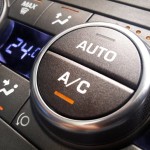Air Conditioning
Air Conditioning Diagnostic
Our Air Conditioning Diagnostic includes a thorough inspection for faults and leaks and inspection of the compressor, hoses and condenser.
We would recommend carrying out this procedure prior to our Air-Con Re-charge.
Air Conditioning Recharge / Regas
The recharge process is quite simple and involves removing any old refrigerant gas and oil from your air con system before replacing this with the correct amount of new refrigerant and lubricant as per your vehicle manufacturer’s recommendation. A vacuum test is also performed to ensure there are no cracks or damage in your vehicle air conditioning system that could cause the gas to leak out. Within an hour the whole recharge process is completed and you will once again have refreshing cool air on demand.
What is that bad smell??
Maybe your air conditioning hasn’t worked for a while or maybe you’re worried about that initial unpleasant smell?
The odour emitted from the ventilation system will indicate there is something wrong with the air conditioning. In most cases this is due to the formation of bacteria and fungi in the system. This gets systematically blown back in to the vehicle cabin as the system is switched on. The air con system can be the ideal breeding ground for bacteria and other micro-organisms which get in through the ventilation system. This is particularly concerning for sufferers of asthma or allergies.
In-car cleanliness is important to the driver’s welfare and comfort as well as any passengers.
Kevin Gourven, Thermal Global Product Line Manager at Delphi says “The bacteria will never go away if you don’t service your car. They exist in the pipes and the receiver dryer, which is there to retain all of the pollution within the system”. He adds “It is not a system that will stop their car from driving but it is crucial for their safety and comfort”.
Utilising your Air conditioning system can be better on fuel consumption
Based on a study conducted by the Society of Automotive Engineers (SAE), driving with the windows up and the air conditioning on is a more fuel-efficient way to drive.
As your speed increases, the amount of drag on the vehicle increases. But the drag doesn’t increase in a linear fashion, it increases exponentially. For example; when your vehicle is traveling at a speed of 70 miles per hour (112.7 kilometres per hour), there’s actually four times more force on the vehicle than when you’re cruising around at 35 miles per hour (56.3 kilometres per hour). So even though the vehicle’s speed is doubled, the drag is actually increased by four times.
What you can do to help:
- Use the air conditioning regularly (at least once a week) so the refrigerant is moving frequently. This will prevent any humidity or blockages forming in the system.
- Refrain for using the re-circulation system for long periods.
- Have your air-con system serviced at least once a year. Don’t wait for the smell – in new cars this could be after two to three years!
- Keep the windows up and the Air-Con on at speeds of over 40mph.


 D5 Creation
D5 Creation